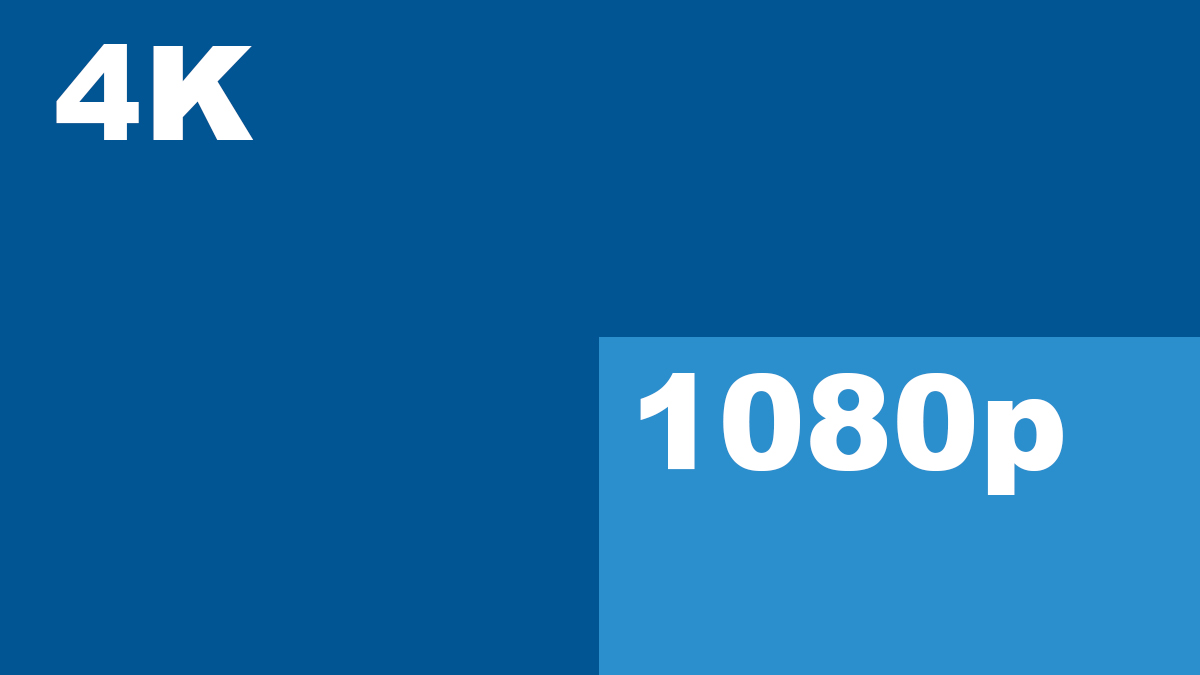Does your business need 4K video for marketing? This question often arises as businesses evaluate their video content strategies. As an Orlando video production company, we frequently hear from clients wondering if investing in 4K video for marketing is necessary. In this blog post, we’ll explore whether 4K content is essential for video marketing and highlight key considerations for businesses.
What is 4K Video?

4K, or Ultra High Definition (UHD), is a video resolution significantly higher than standard HD (1080p). It typically comes in two resolutions:
- 3840 x 2160 pixels (common for consumer use)
- 4096 x 2160 pixels (used in digital cinema)
4K offers four times the pixel resolution and twice the line resolution of 1080p HD, providing sharper, more detailed images. While 1080p and other resolutions like 1080i and 720p are common, 4K delivers the highest quality in consumer video formats.
Most 4K content uses the 3840 x 2160 resolution, referred to as UHD in consumer settings. In professional and cinematic contexts, 4K is often used with variations like 4K x 2K or Quad Full HD.
In short, 4K provides crisper images and vibrant colors, making it ideal for high-end video production, streaming, and home entertainment.
Understanding 4K Video for Marketing

As 4K technology becomes more popular, especially with streaming services like Netflix and Amazon Prime Video, businesses are increasingly evaluating whether they need 4K video for marketing. 4K offers a significant improvement in video quality, making it an ideal choice for high-definition content that enhances customer engagement and brand visibility. Understanding the differences between HD and 4K is essential when considering its role in your marketing strategy. Despite its growing presence, many businesses still aren’t fully aware of the benefits 4K can provide in a marketing context. For more details, check out “What’s the Key Difference Between HD and 4K Video Production?“
Challenges with 4K Video Content
Visual Difference Between 1080p and 4K
One of the key challenges businesses face when considering 4K video for marketing is whether the visual difference compared to 1080p is noticeable enough to justify the investment. While 4K offers superior resolution, viewers may not notice a significant improvement in quality, especially on smaller screens or from typical viewing distances. For example, a promotional video on a 40-inch TV may not fully showcase the advantages of 4K unless viewed up close. For most marketing purposes, 1080p provides a satisfactory visual experience.
4K Compatibility and Technical Challenges
4K video content requires specific hardware to be viewed at its full resolution. While more devices support 4K, many still do not, leading late adopters to experience compatibility issues that can affect the viewing experience. Additionally, streaming 4K content requires higher internet speeds, which may not be feasible for all viewers. When deciding whether to incorporate 4K videos into your marketing, it’s important to consider these compatibility and technical challenges.
4K Video Production Considerations
The production process for 4K videos involves larger file sizes compared to 1080p content. For instance, 29 minutes of 4K video might take up to 19.8 GB, while the same duration in 1080p would be around 8.42 GB. These larger files require more storage and can increase editing time and costs, which are important production considerations. If your business needs 4K video for marketing, it’s essential to weigh these factors against your project’s needs. While some video production companies may charge extra for 4K content, we believe in maintaining transparent pricing without additional charges for 4K resolution.
4K Video Storage and Transfer Challenges
Transferring and storing 4K video files can be tedious due to their large size. As mentioned earlier, 4K files are significantly larger than 1080p video files. For example, if you’re shooting a two-day annual meeting in 4K and want the raw footage, you would need at least a 1TB hard drive, whereas a 1080p shoot wouldn’t require a drive that large. If you use a cloud service like Dropbox to store the files, depending on your internet download speed, it could take a considerable amount of time to download and upload the footage.
Challenges in Distributing 4K Video
When distributing video content for situations such as a welcome video at a conference, file size and resolution can impact delivery. The laptop at the venue might not support 4K video, and the display resolution could be limited to 1080p, making the benefits of 4K irrelevant in that setting. For social media posts or website content, 1080p video is often sufficient and more manageable in terms of file size and upload times. These factors make 1080p a more practical choice for digital distribution in many cases.
4K Video: Does Your Business Really Need It?
In conclusion, while 4K resolution offers advantages in certain contexts, it’s not always necessary for effective video marketing. For most businesses, 1080p provides a strong balance of quality and practicality, delivering clear, engaging content without the added complexity and cost of 4K. So, does your business need 4K video for marketing? For most businesses, the answer is likely no—1080p is more than enough.





